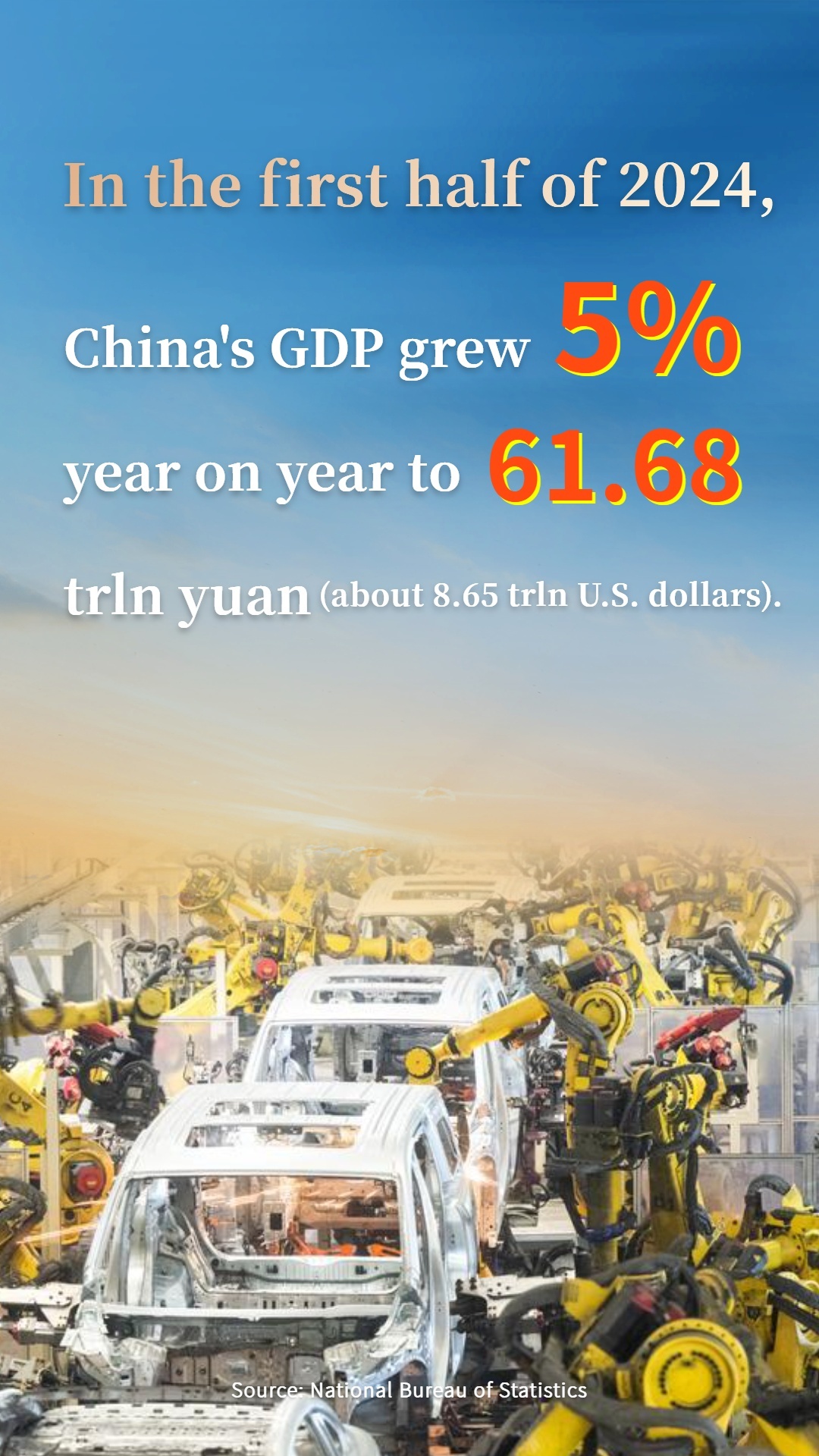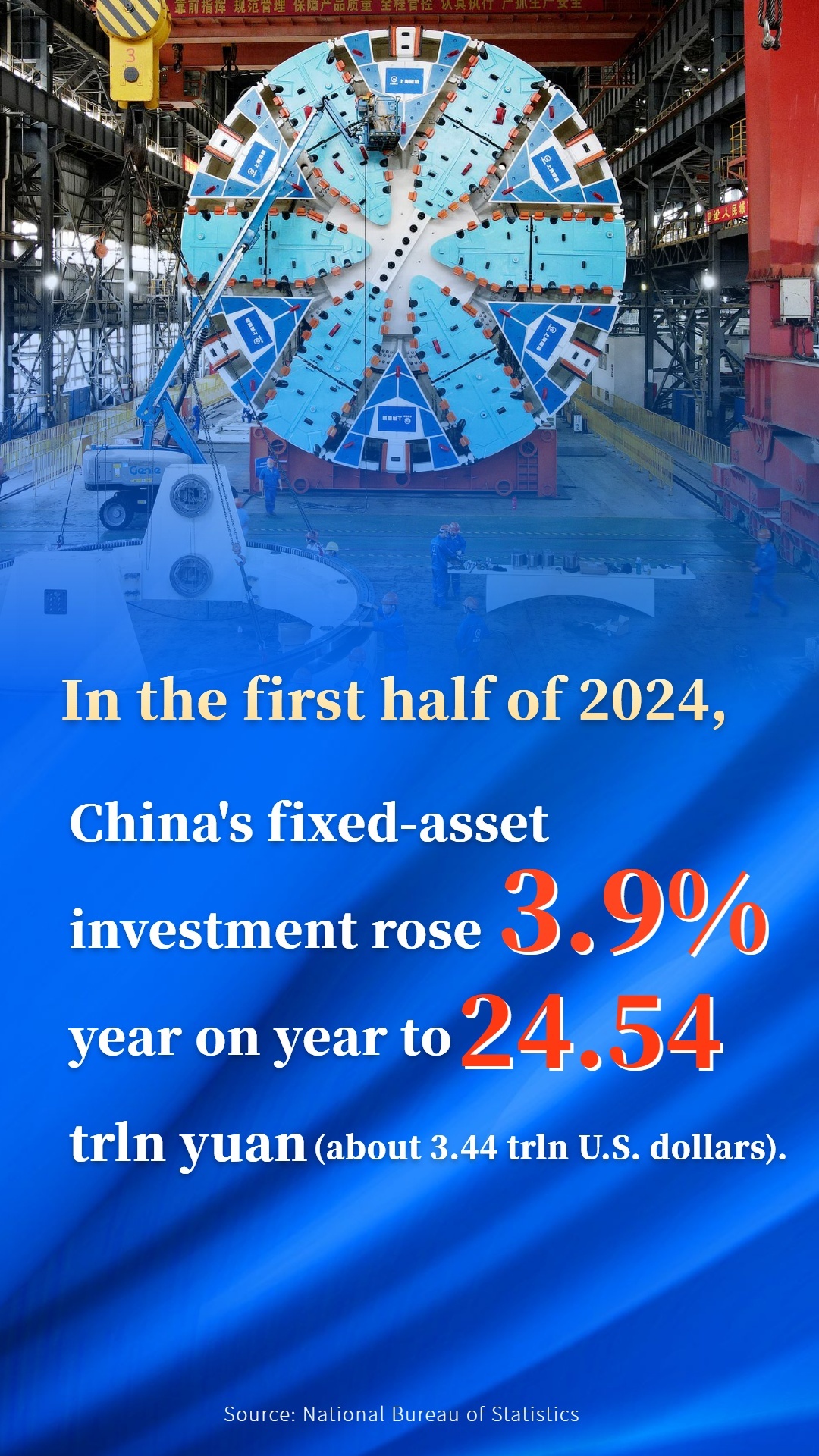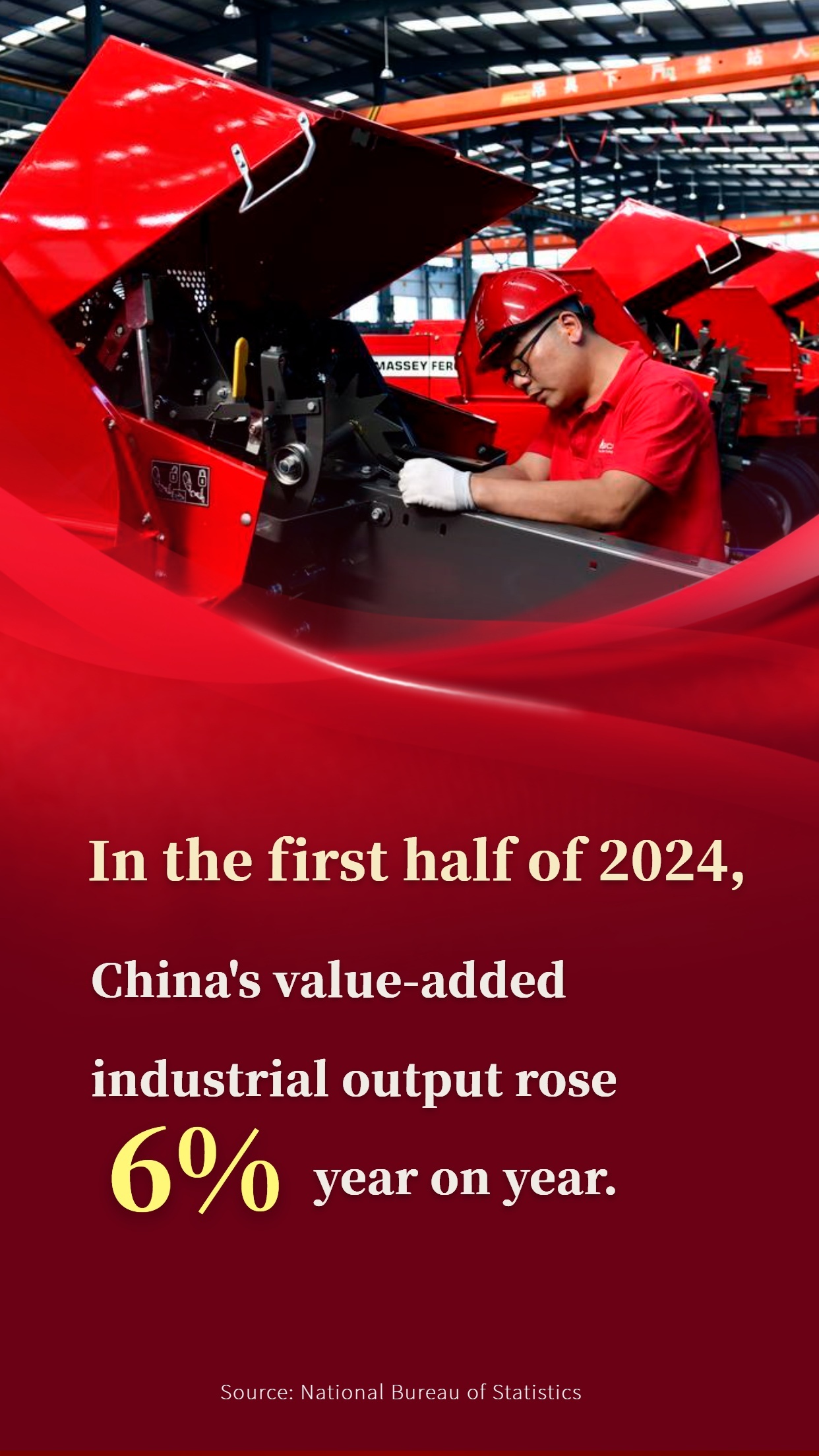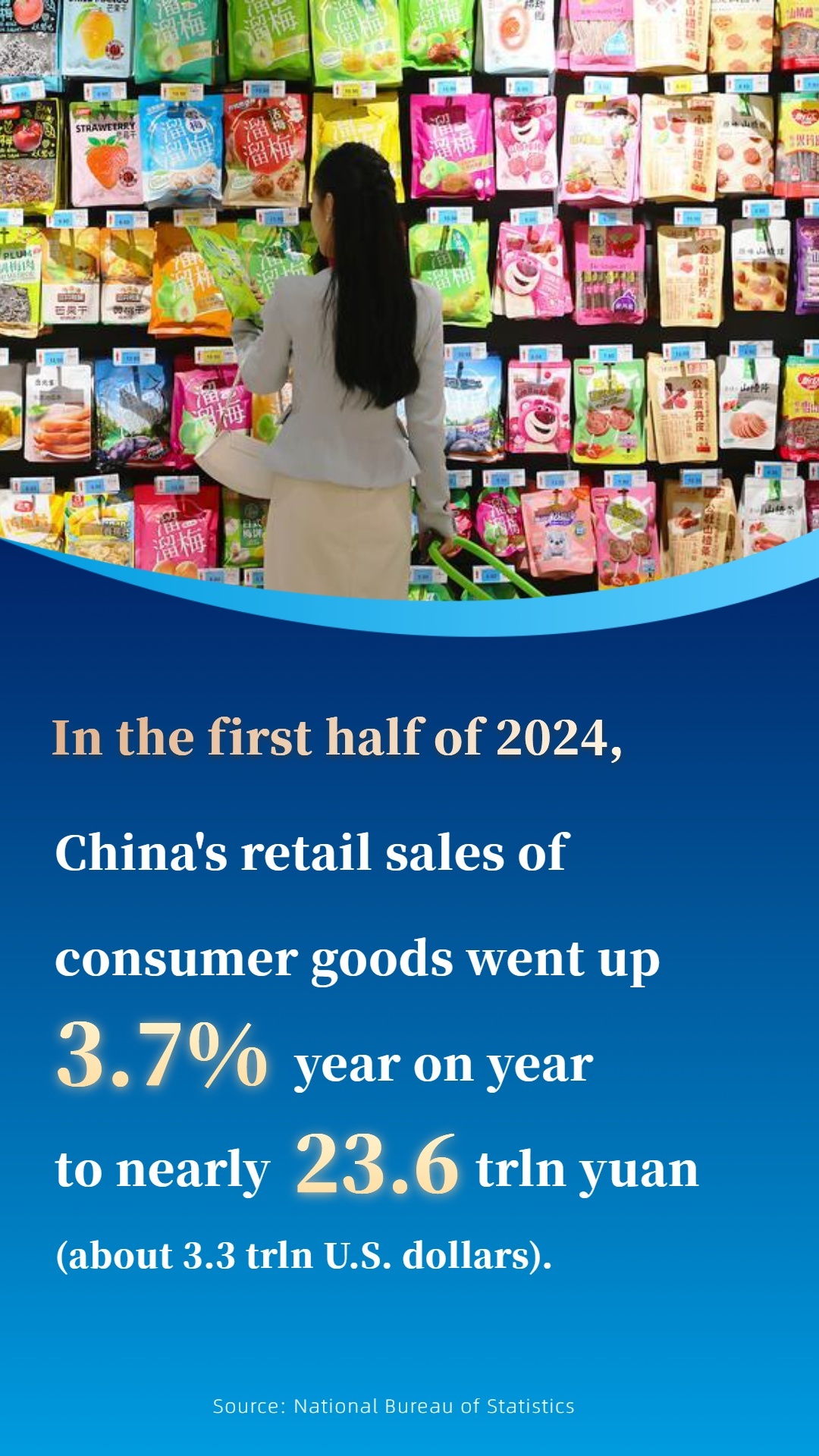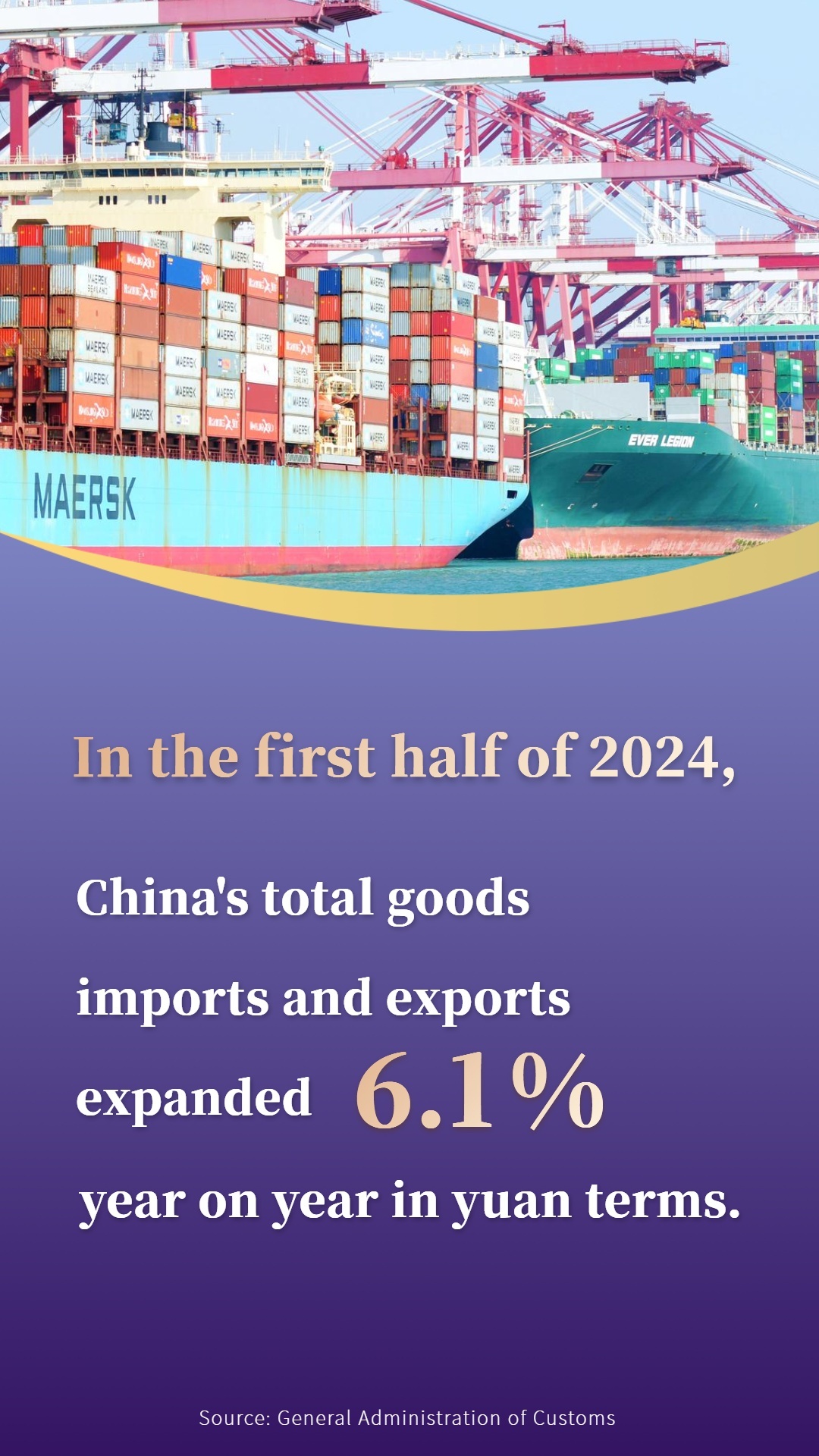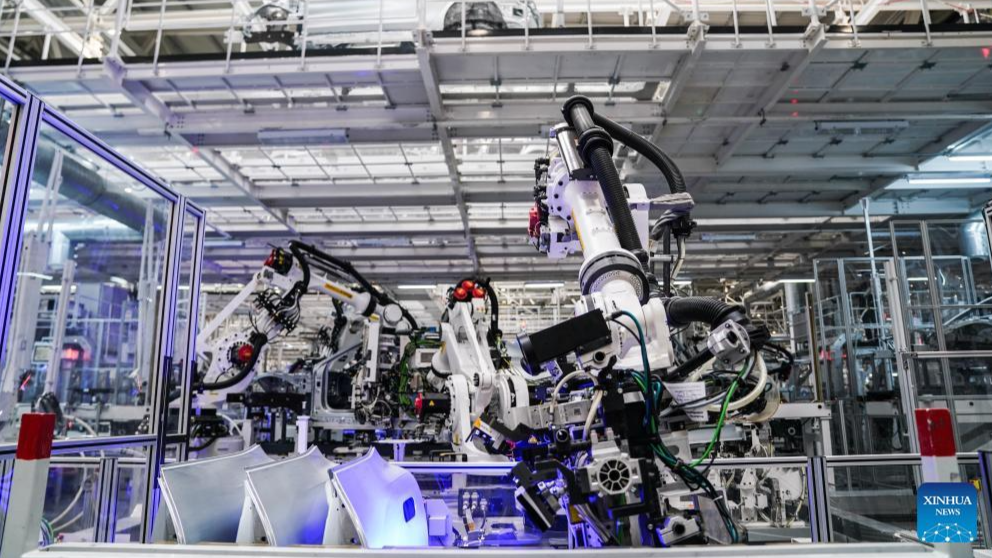
BEIJING - China's gross domestic product (GDP) grew 5 percent year-on-year in the first half of 2024, data from the National Bureau of Statistics (NBS) showed Monday.
China's GDP reached around 61.68 trillion yuan ($8.65 trillion) in the first half, NBS data showed.
In the second quarter, the country's GDP expanded 4.7 percent year-on-year, according to the NBS.
"Overall, the national economy has continued to improve in the first half in a stable manner," the NBS said in a statement commenting on the economic performance, citing support from policy incentives, rebound in external demand and development of new quality productive forces.
Consumption continued to play a major role in driving growth, with final consumption contributing to 60.5 percent of the economic expansion in the first half, contributing 3 percentage points to the GDP growth
The second industry expanded 5.8 percent year-on-year in the first half, outpacing a 3.5-percent increase in primary industry and 4.6 percent in the service sector, according to the NBS.
On a quarterly basis, China's economy expanded 0.7 percent in the second quarter.
Consumption continued to play a major role in driving growth, with final consumption contributing to 60.5 percent of the economic expansion in the first half, contributing 3 percentage points to the GDP growth.
The country's surveyed urban unemployment rate stood at 5.1 percent in the first half of 2024, down 0.2 percentage points from the same period last year.
ALSO READ: China sees stable price growth as economic recovery continues
The bureau said the growth was "hard-won" as the world's second-largest economy had faced a more uncertain, complex and severe external environment as well as new challenges from deepening structural adjustment domestically.
The NBS attributed the weaker second-quarter growth to short-term factors such as extreme weather and floods, but said it also reflected rising challenges, especially from insufficient effective demand and unsmooth economic flow at home.
"But from both a fundamental and a medium to long-term perspective, the economic fundamentals that will sustain long-term growth remain unchanged, and the trend toward high-quality development has not changed," the NBS said, noting that the Chinese economy is still a key engine for global growth.
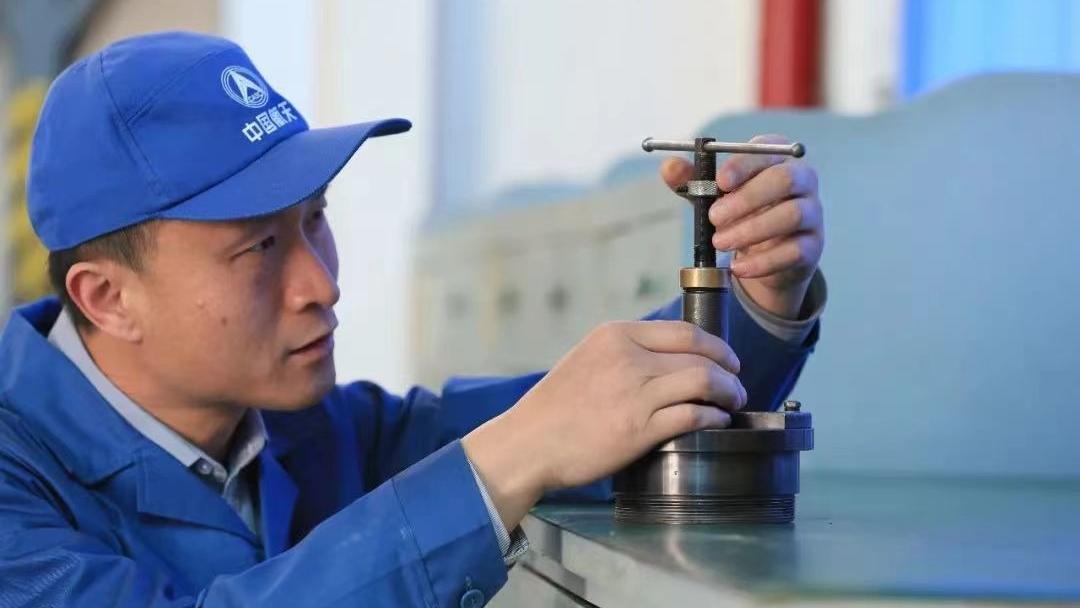
Fixed-asset investment
Meanwhile, China's fixed-asset investment continued stable growth in the first half of 2024, with high-tech sectors witnessing a robust capital influx, NBS data showed.
Total investment rose 3.9 percent year-on-year to 24.54 trillion yuan during the period, the NBS said in a statement.
Investment in infrastructure construction went up 5.4 percent from a year ago during the January-June period, while manufacturing investment increased 9.5 percent. In particular, investment in high-tech industries posted a stellar increase of 10.6 percent in the period.
Data showed investment in high-tech manufacturing and high-tech services gained 10.1 percent and 11.7 percent from a year ago in H1. In particular, the aerospace equipment manufacturing industry saw a 38.3 percent surge in investment, and investment in the e-commerce service sector increased 24.1 percent
Excluding the property sector, which was still under adjustment, the country's fixed-asset investment climbed 8.5 percent compared with a year earlier in H1. Meanwhile, investment in property development fell 10.1 percent.
An NBS spokesperson attributed the stable investment expansion primarily to the vibrant demand unleashed by China's new round of large-scale equipment upgrades and trade-in of consumer goods.
Driven by the equipment renewal program, investment in purchasing equipment, tools and instruments in H1 jumped 17.3 percent year-on-year, contributing 2.1 percentage points to total fixed-asset investment growth.
The spokesperson highlighted the role of investment in improving the country's industrial structure as more capital flowed into burgeoning high-tech sectors.
Data showed investment in high-tech manufacturing and high-tech services gained 10.1 percent and 11.7 percent from a year ago in H1. In particular, the aerospace equipment manufacturing industry saw a 38.3 percent surge in investment, and investment in the e-commerce service sector increased 24.1 percent.
China will continue to boost effective investment by promoting major projects, industrial upgrades and equipment renewals, as well as stimulating private capital, according to the NBS.
More investment is needed to improve weak areas of the economy and boost new industries. Investment growth will also be quickened by the country's intensified moves to implement major national strategies and build up security capacity in key areas.
READ MORE: China to initiate issuance of ultra-long special treasury bonds
China has used the issuance of ultra-long special treasury bonds and local government special bonds to ensure sufficient funds for expanding investment. An additional 1 trillion yuan of treasury bonds were issued during the fourth quarter last year, under which 15,000 projects have started construction.
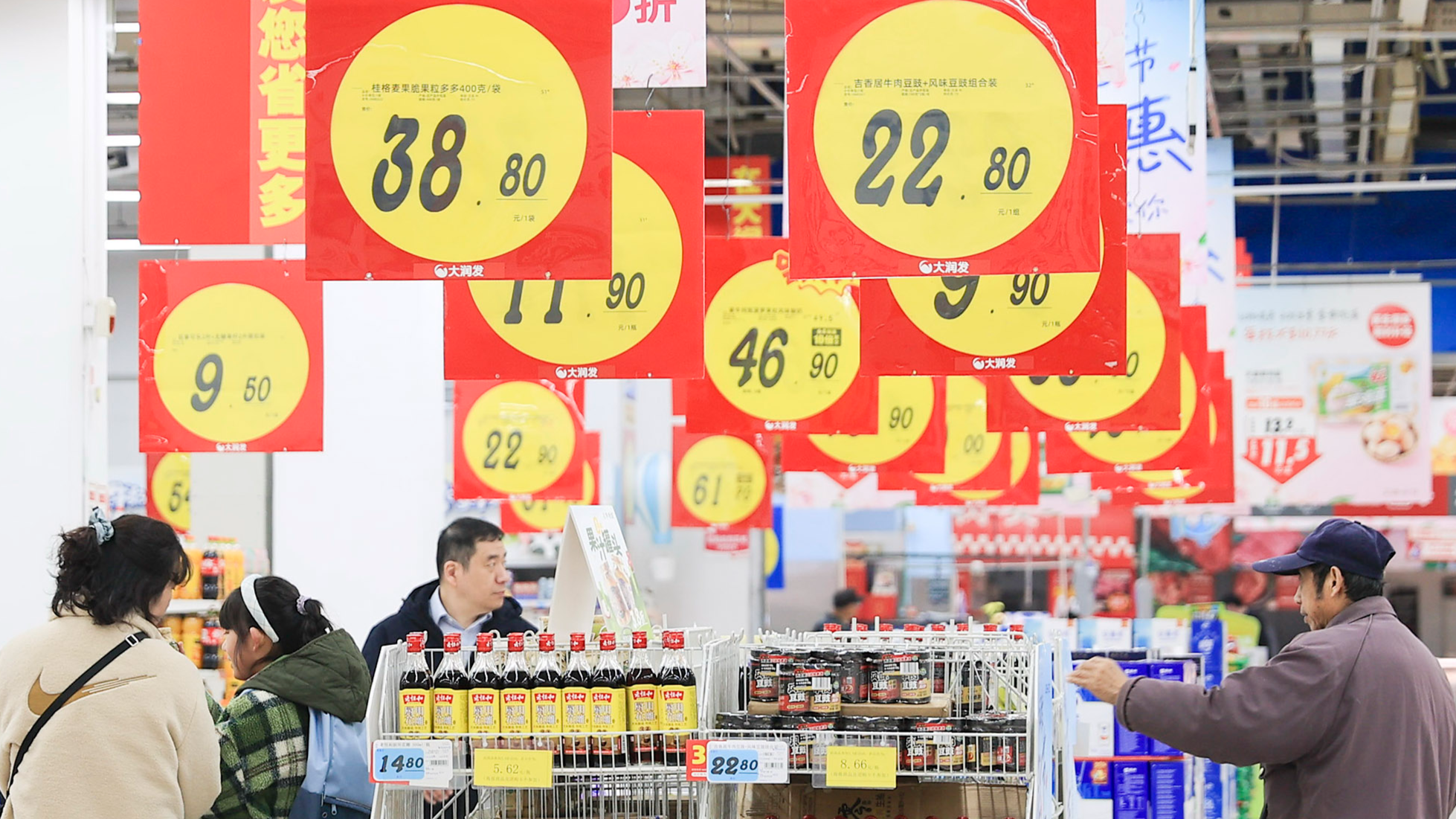
Retail sales
China's retail sales of consumer goods went up 3.7 percent year-on-year in H1, according to the bureau's data.
The country's retail sales of consumer goods totaled nearly 23.6 trillion yuan in the period, data from the NBS showed.
Boosted by sales promotions and new e-commerce models, China's online retail sales went up 9.8 percent year-on-year during the first six months, sustaining a relatively fast growth
With the solid implementation of pro-consumption policies, the consumer market scale has continued to grow in the first half of they year, said Yu Jianxun, an official with the NBS.
In June alone, retail sales was up 2 percent year-on-year, data from the NBS showed.
Boosted by sales promotions and new e-commerce models, China's online retail sales went up 9.8 percent year-on-year during the first six months, sustaining a relatively fast growth.
ALSO READ: China begins drafting law on promoting private economy
Online sales of physical goods increased 8.8 percent from a year ago, accounting for 25.3 percent of total retail sales during the period.
Services consumption stood out as a bright spot, with retail sales of services expanding 7.5 percent from a year ago in H1. The figure was 4.3 percentage points higher than that of goods.
The catering industry reported a 7.9-percent increase in revenue, while retail sales of goods rose 3.2 percent, according to the NBS.
Resident nominal disposable income
Monday's data also showed China's per capita disposable income stood at 20,733 yuan in the first half of the year, up 5.4 percent year-on-year in nominal terms.
The urban per capita disposable income came in at 27,561 yuan, up 4.6 percent, while per capita income in rural areas stood at 11,272 yuan, up 6.8 percent.
In terms of income sources, per capita income from wages, net income from operations and net income from property increased by 5.8 percent, 6.4 percent and 2.1 percent, respectively, in nominal terms.
During this period, the median of nationwide per capita disposable income was 17,358 yuan - representing nominal growth of 5.9 percent year-on-year.

Urban unemployment
On China's job market, the surveyed urban unemployment rate on average stood at 5.1 percent in the first half of 2024, down 0.2 percentage points from the same period last year, the official data showed.
In June, the surveyed urban unemployment rate in the country came in at 5 percent, flat from the previous month and down 0.2 percentage points from June last year, according to the NBS.
ALSO READ: China launches campaign to promote employment
Despite pressure, China's employment situation was generally stable in the first six months, supported by a recovery in the labor-intensive service sector, government pro-employment policies and the creation of new types of jobs driven by new industries and new business models, said an NBS spokesperson commenting on the data.
Employment in wholesale and retail, accommodation and catering, transportation, and information transmission sectors saw marked year-on-year increases in the first half of the year, according to the NBS.
In 2024, China aims to create over 12 million urban jobs and keep the surveyed urban unemployment rate at about 5.5 percent.
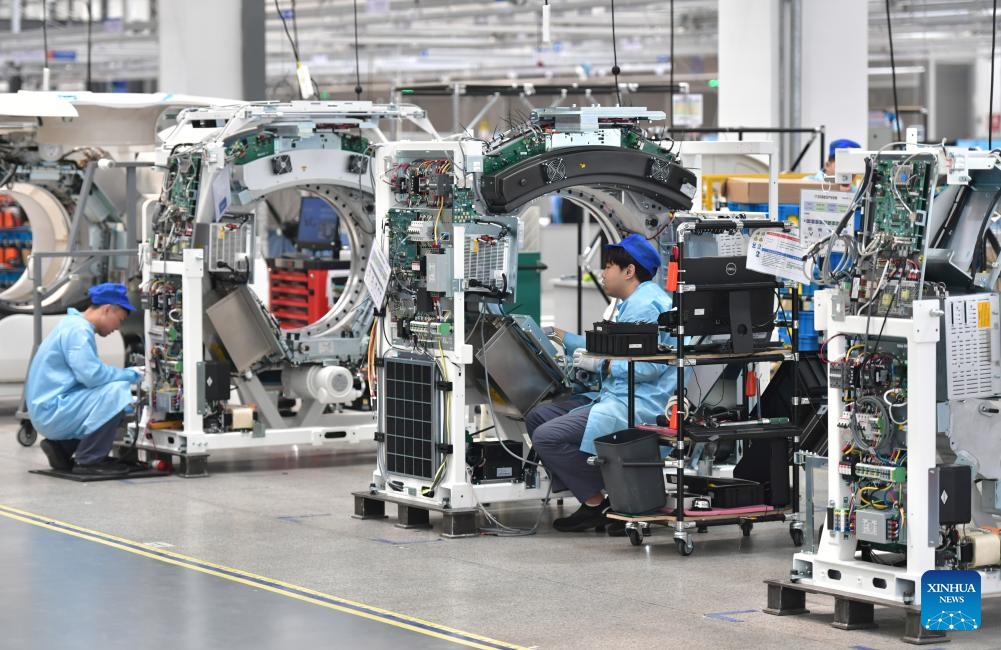
Industrial output
China's industrial production growth remained stable in June, as industrial upgrading and new quality productive forces continued to advance.
The country's value-added industrial output, an important economic indicator, expanded 5.3 percent year-on-year in June, data from the NBS showed.
On a monthly basis, the industrial output edged up 0.42 percent in June from the previous month. During the January-June period, it rose 6 percent year-on-year.
A breakdown of the data showed that the output of the equipment manufacturing sector, which took up one-third of the overall industrial output, climbed 7.8 percent in the first half of the year
The industrial output measures the activity of enterprises each with an annual main business turnover of at least 20 million yuan.
A breakdown of the data showed that the output of the equipment manufacturing sector, which took up one-third of the overall industrial output, climbed 7.8 percent in the first half of the year.
The high-tech manufacturing industry also posted strong growth, with its output up 8.7 percent in the first half, according to the NBS.
The country's production of service robots, smartphones and new energy vehicles surged 22.8 percent, 11.8 percent and 34.3 percent, respectively, in the first six months.
NBS official Tang Weiwei said the country's industrial production had maintained stable development in the first half of the year with improving momentum. Tang also warned about challenges facing industrial sectors, including "complex and grave external situation and insufficient effective demand at home."
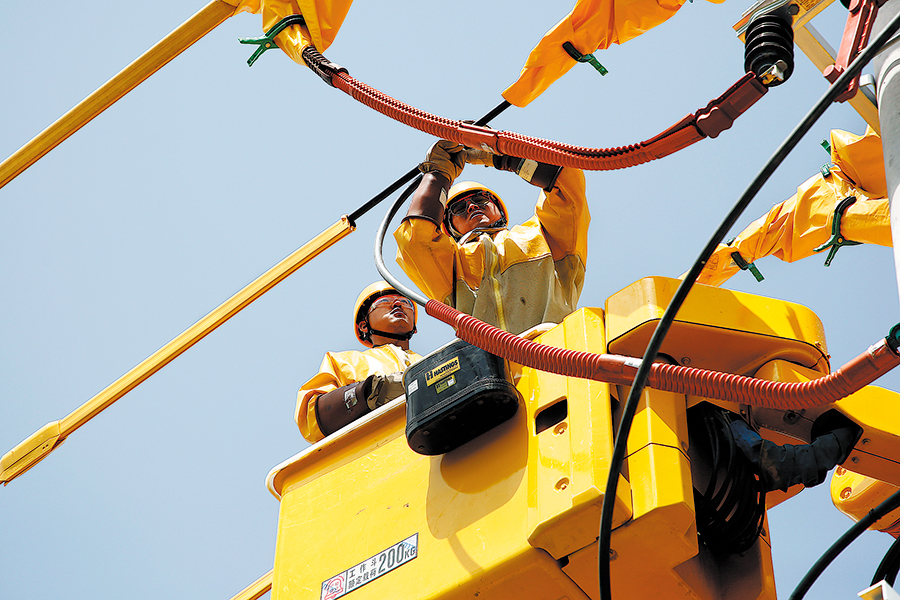
Power generation
On energy, power generation of China's major electricity production enterprises went up 2.3 percent year-on-year in June, the official data revealed.
Total power output of these firms reached 768.5 billion kilowatt-hours last month, according to the NBS.
A breakdown of the data revealed that the output of solar power expanded 18.1 percent year-on-year, while that of hydropower soared 44.5 percent.
A breakdown of the data revealed that the output of solar power expanded 18.1 percent year-on-year, while that of hydropower soared 44.5 percent
The output of thermal power and nuclear power shrank 7.4 percent and 4 percent, respectively, year-on-year, said the NBS, adding that the production of natural gas has maintained steady expansion in the first half of the year.
The country produced 123.6 billion cubic meters of natural gas in the January-June period, up 6 percent from a year earlier.
READ MORE: China vows green future for oil and gas works
China's natural gas imports also posted fast growth during this period, NBS data showed. A total of 64.65 million tonnes of natural gas was imported in the first six months of 2024, up 14.3 percent year-on-year.
In June alone, the natural gas output expanded 9.6 percent year-on-year to 20.2 billion cubic meters, according to the bureau.
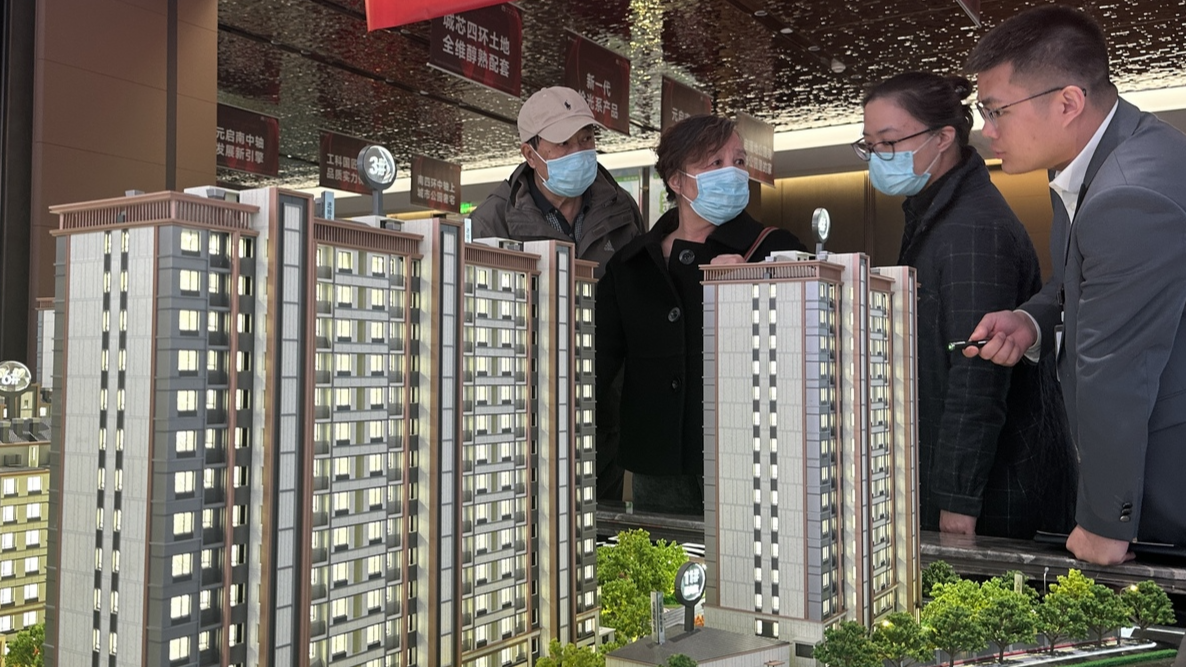
Home prices
Major Chinese cities reported falling home prices in June with narrowing declines, the data showed.
On a monthly basis, more cities reversed the declining trend in home prices. In terms of new homes, 64 out of 70 major cities saw their prices decline, while in terms of resold homes, 66 out of 70 major cities saw their prices fall, the NBS said.
New home prices in China's first-tier cities, namely Beijing, Shanghai, Guangzhou and Shenzhen, fell 0.5 percent month-on-month, 0.2 percentage points narrower than the previous month. Prices in third-tier cities also witnessed smaller declines
New home prices in China's first-tier cities, namely Beijing, Shanghai, Guangzhou and Shenzhen, fell 0.5 percent month-on-month, 0.2 percentage points narrower than the previous month. Prices in third-tier cities also witnessed smaller declines.
Second-hand home prices fell by 0.4 percent month-on-month in first-tier cities, with the decline narrowing by 0.8 percentage points from the previous month. Especially, Beijing and Shanghai saw prices rise for the first time this year, up by 0.2 percent and 0.5 percent, respectively.
On a yearly basis, new home prices decreased in most cities in June. As for second-hand homes, their prices in first-tier cities fell by 9 percent year-on-year, with the decline narrowing by 0.3 percentage points from the previous month.
READ MORE: World Bank, Barclays raise GDP forecast for China
The NBS noted the rising vitality of the property market, saying that policy effects have gradually emerged.
According to the NBS, citing housing and other departments, the contracted floor area of second-hand homes has increased year-on-year in recent months.
In May, China implemented a series of policies to support the property market, including reducing minimum down payment ratios, removing commercial mortgage rate floors for first and second homes, and establishing a re-lending facility for government-subsidized housing projects.
